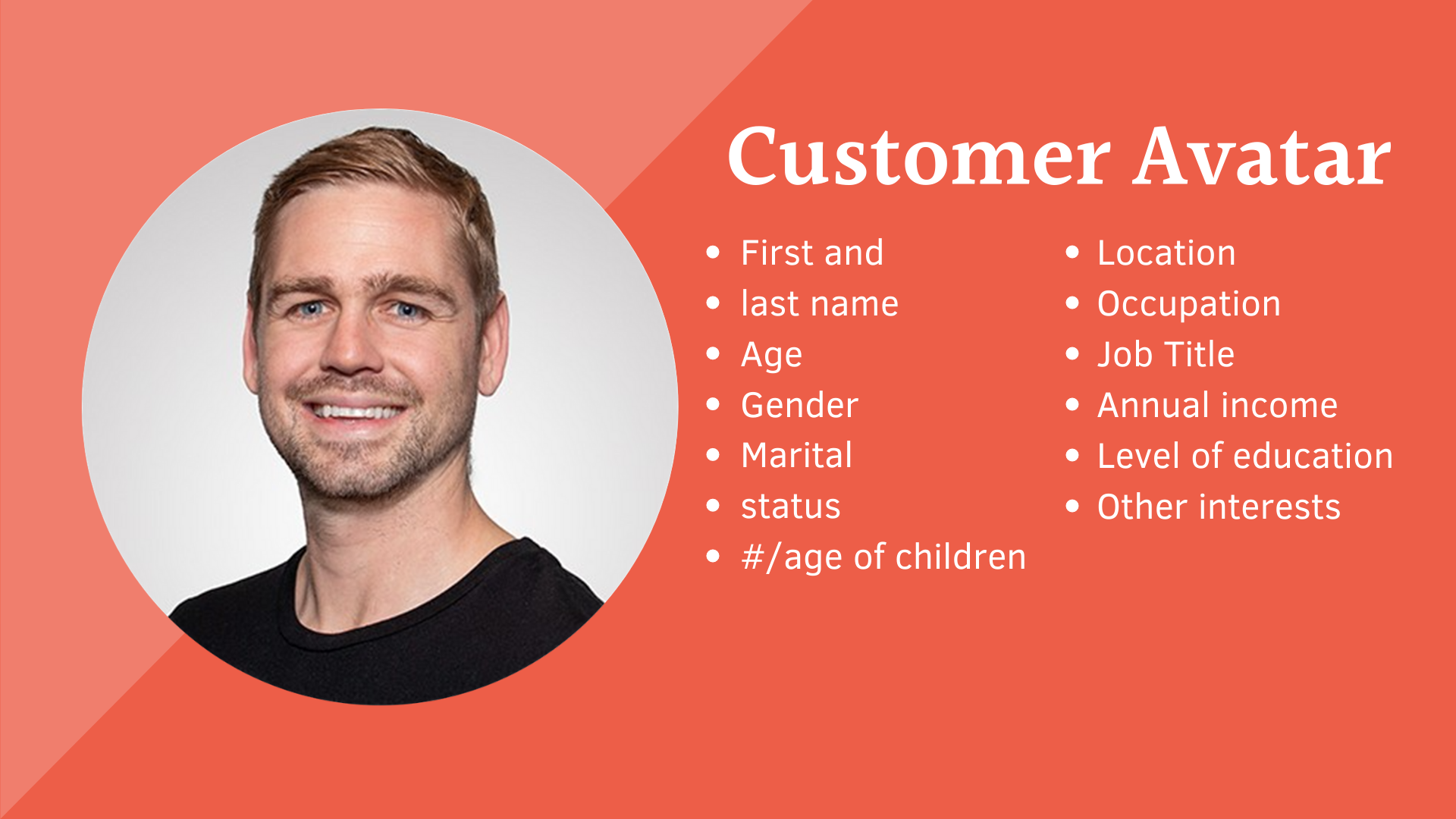Your company’s brand can be your most valuable asset. That is, if you understand that your brand is so much more than a fancy logo, a stunning website, and the product or service you offer.
Your brand is your reputation. It’s not only what you say it is, but what your customers say it is. A brand strategy is the game plan you use in guiding those perceptions.
As consumers, we buy from companies that we know, like, and trust. A whopping 81% of consumers say they need to trust the brand to buy from them*. So, you NEED to build a brand strategy that connects you with your ideal client and BUILDS that trust. A strong brand can attract, communicate, and engage with its targeted audience. That’s where an effective brand strategy comes into play.
An effective brand strategy consists of three main pillars:
- Brand Image/Identity
- Customer Perosna
- Brand Story
Brand Image/Identity
Brand identity is the foundation on which you build your brand and brand strategy. Without laying this strong foundation, you won’t get far. When developing your brand identity, it’s important to focus on these three key areas: your mission, your core values, and your logo. These fundamental pieces are instrumental in setting and achieving the right goals, attracting the right team members and clients, and creating a brand strategy that connects with people on a deeper level that sells more.
1. Mission
If I were to ask you or, more importantly, any of your employees, what your mission is, would you or they be able to say it by heart?
Did you create your mission statement because “that’s what you’re supposed to do” when you start a business? Is it just words on a wall that have little to no meaning to anyone? If so, it’s time to go back to the drawing board, because a strong mission statement that resonates with you, your employees, and your potential clients is extremely powerful.
Mission statements are an incredible navigation too. By identifying the purpose of your company, you will have a clearer understanding of the goals you and your team need to set out and accomplish. Once those goals are set, you and your team can strategize on how to achieve them. This is something you can turn to as a guideline for all actions and decisions.
A strong mission statement is not only good for internal communication, but also one of the most valuable messages you can put out to the public. Potential customers will judge your brand based on its mission, to decide whether it aligns with their values and beliefs or not. If your mission doesn’t align with your values, or doesn’t resonate with your target client, then it’s time to revisit it.
2. Core Values
77% of consumers buy from brands who share the same values as they do**. If you are having a hard time keeping your top talent, or attracting the clients you really want, it’s time to revisit your core values.
Core values will support your company’s mission, vision, and company culture.
Having clear values ensures that you attract the right people to your team, and that everyone is rowing the boat in the same direction. The more your employees align with and embody your values, the more motivated and engaged they will be. Employees will make better decisions, which will help them achieve the company’s goals and vision. They impact your employees’ experience, as well as the relationship you develop with your clients.
When your clients know your core values, they have a better understanding of what you stand for. Having a unique set of values that your company lives by can be a competitive advantage. It will allow you to attract the ideal client and create a much stronger relationship, based on your shared values.
The key to having your core values being a competitive advantage is to reinforce them constantly with communication so that eventually your entire company lives and breaths by them.
3. Logo
A logo is much more than just an image with some text and your favorite colors.
Most likely, your logo will be the first impression your potential clients have of your company. It becomes a point of recognition for them, and a key foundation for your brand. Essentially, your logo becomes the face of your company.
A well-designed logo is an easy way to convey the emotions that will resonate with your ideal client. Some factors you need to consider when designing your logo include:
- Is it memorable or unique?
- What font style is your logo?
- Modern Logos – Uses sans-serif fonts, combines classic and trending elements, includes sleek lines, sharp and simple lettering and color.
- Traditional Logos – Uses classic fonts like Garamond, Tahoma, or Avenir (to name a few), fancy logos are often handwritten lettering or script fonts.
- Edgy Logos – Common in brands that appeal to younger audiences, usually looks stamped or drawn by hand like a graffiti artist and is fun or bubbly.
- Minimalist Logos – Fonts are stripped down and only includes essential elements presented in the simplest way possible, without extra embellishments. Considered smart and extremely simple.
- Are you using the right style for the industry you are in?
- Is it future proof?
- Will it look good across all media?
- Does it look good in black and white?
- Is it in the right formats?
- Vector
- AI
- Jpeg
Customer Persona
It is a lot more expensive to acquire a new customer than it is to keep an existing customer so developing brand loyalty is key to growing your business. Brand loyalty starts when a customer feels like a company truly understands their problems and gives them their desired result, with an over-the-top product and/or service. Building loyalty should be a main focus in your brand strategy.
We’ve all heard the saying, “if you try to be everything to everyone, you’ll end up being nothing to no one.” This is especially true when building a brand. The more you narrow your focus and the better you know your niche, the more you you’ll know your customer, and the better you can solve their problems and satisfy their needs.
So, how are you supposed to get to know your niche well enough that you can create raving fans who refer you to all their friends? Start with these three steps and then pair it with everything in the Story section coming up next.
1. Understand Your Target Client
Understanding your target client on a personal level is crucial to growth. This is an important part of your brand strategy that will make it so much easier to identify the two reasons they really want to buy your product or service.
You need to know enough about your ideal client that you can create a message that connects with them on a deeper level and urges them to take action. Creating a fake person, or customer avatar, that resembles your “perfect” client allows you to develop everything you need to foster that deep connection.
You shouldn’t create anything based on of what you think your ideal client wants and needs. You need to be creating everything based on what your customer avatar wants and needs.
2. Discover Your Ideal Client’s Needs
Did you start your own business so that you never have to report to anyone? If so, I’m sorry to have to tell you that you actually do need to report to someone.
You may not have a boss to check in with, but you do have to report to your clients. If you are putting out a product or service that you think will make people happy and satisfy their needs, then you might be in for a rude awakening.
Recognizing your client’s true needs requires you to check in and communicate with them regularly. Consider the following:
- What do they love about your product or service?
- What could be better about your product or service?
- Why did they choose you over the competition?
- What are their goals, challenges, and pain points regarding your product or service? (We will dive deeper into this in the next section)
A brand that takes the time to discover their clients wants/desires, can show them they understand them, and provides the solution that solves them is always going to win.
3. Who They Are Not
Most companies don’t take the time to talk about what type of client is not a right fit for their product or service.
While it’s important to understand who your ideal client is, it’s just as important to know who they are not. Creating a strong brand that resonates with people requires you to attract the right people, and to turn away the people who aren’t the right fit.
Most companies don’t take the time talk about what type of client is not right for their product or service. When you understand what clients are not the right fit, you will be able to identify the types of questions they ask and what is important to them. Knowing this will allow you to turn them away earlier in the sales cycle and save you and your team a ton of time and money.
Your Story
It has never been easier, or cheaper, to start a business and market it to the world. However, at the same time, there also has never been so much noise — that makes it harder to stand out and differentiate yourself from the masses.
In this environment, being a faceless entity will no longer cut it. It’s necessary to connect with your target audience, evoke emotion, and engage them on a deeper level. Having a story to tell your audience allows you to do that.
There are three parts to developing a strong story: your why, what you actually sell, and how you solve that problem in a way that sets you apart.
1.Your Why
It’s safe to say that only having a quality product or service won’t cut it anymore; you need to be able to communicate it in a way that differentiates you from everyone else. Instead of just providing facts and statistics, focus on being thoughtful and real. Sharing your brand’s history, challenges, successes, and values is a great way to do this, because no one can copy YOUR story.
Sharing “Why” you do what you do creates an authentic connection with your target audience. 86% of consumers say that authenticity is a key factor when deciding what brands they like and support.***
Do you have a clear understanding of why you do what you do? Can you and your team easily articulate this? Does your target audience know your why?
2. What You Actually Sell
If I were to ask you what you sell, would you just describe your product or service to me? Technically, you wouldn’t be wrong, but you are missing the real reason people buy a product or service.
People buy for two reasons: to avoid pain or loss, or to gain pleasure. Sometimes, they will even buy to fulfill both reasons.
Your goal in finding your potential clients’ problem is to find the pleasure they wish to gain, or the pain they wish to avoid. Then, you can show them how your product or service will give them the pleasure they are seeking, or avoid the pain they are feeling.
For example, you are an HVAC company, you aren’t simply selling an air conditioner. You are helping a family to avoid the pain of sitting in a house that feels like a sauna (and fighting with each other because everyone is so uncomfortably hot and irritable). You are selling them the pleasure of being a happy family, playing games in the comfort of a perfectly chilled house, thanks to the new air conditioning unit they had installed.
People buy products and services based on emotional needs, and then justify their purchase logically. Once you have shown them that you can solve their emotional problem, then it’s time to pull out the benefits, stats, and facts of your product or service in order to convince their rational brain they made the right decision.
3. How You Set Your Product or Service Apart
“We go above and beyond to ensure client satisfaction.” “We only provide the highest quality of work and the best customer service.” Sound familiar?
These may seem like great promises to get people’s attention, but these types of promises are what customers expect these days.
There are too many competitors in the market for you not to deliver an excellent customer experience every time. You need to dig deeper to really discover what sets you apart from the competition. Consider:
- Do you have a proprietary process/system that makes your customers experience easier/faster/more enjoyable?
- Do you a technology that makes your product or service perform better than anyone else in the market or make it cheaper than everyone else.
Build Your Winning Brand Strategy
At Adrian Agency, we believe that in order to achieve your goals and dreams, you need to focus on what you are good at. Surround yourself with people who fill in the gaps and support you in your weaker areas.
Unless you are a marketing or branding company, branding probably isn’t your specialty. So, let us do what we’re best at — we’ll help you develop a brand strategy that will take your company to the next level. This branding blueprint is the first step in our proven system that can help you create a brand that that you and your employees will be proud of, your potential clients will rave about, and increase your ROI.
If you are ready to make the changes to your brand that will generate results, give us a call today and schedule your branding strategy session. Or, if you are more of a DIY-er, download our free one-page Branding Blueprint.
Sources
*Edelman 2019: https://www.edelman.com/sites/g/files/aatuss191/files/2019-07/2019_edelman_trust_barometer_special_report_in_brands_we_trust.pdf
**Stackla 2019: https://www.stackla.com/resources/reports/the-consumer-content-report-influence-in-the-digital-age/
***Havas Group: https://havasmedia.com/building-meaningful-is-good-for-business-77-of-consumers-buy-brands-who-share-their-values/




